 |
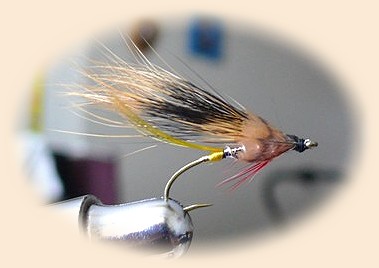 The Hammlim Minnow |
|
|
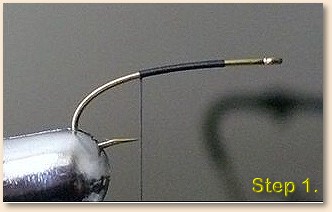 Step 1: Tie on and form a smooth underbody of thread. Stop with the thread hanging down at the point. I tie in quite far back from the eye to act as a landmark. This helps me (at least) to avoid crowding the eye when it comes time to tie in the wing and cheeks.
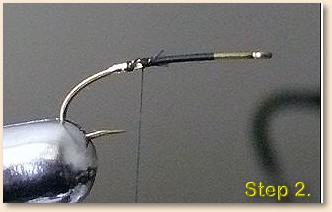 Step 2: Tie in a short piece of gold tinsel and form a small tag to mid-way to the barb. Bring it forward a bit larger than you want then tie off. This way, the tie off gets covered by the tip in the next step.
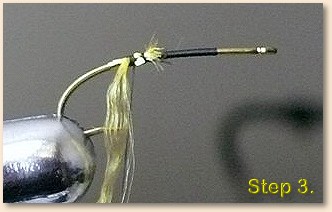 Step 3: Tie in a short strand of golden yellow floss. This piece was about two inches at most.
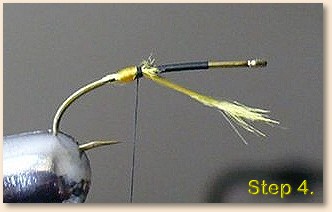 Step 4: Wrap the floss in more or less one place to form a small ball. Then bring it forward to tie off. Again, the tie off will get covered by the body tinsel in the next step. Trim the excess floss.
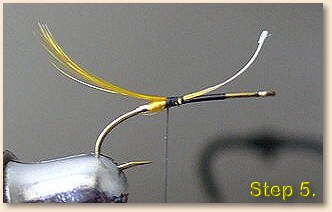 Step 5: Lay the golden pheasant crest in for a tail. This is a great natural material for tails. It's brightly coloured, almost wiry so it holds it shape, and has the translucence that natural material has. Tie in with loose wraps at first to prevent it flaring though.
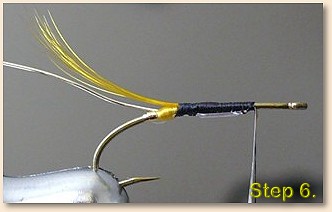 Step 6: Tie in the wire for the rib along the bottom of the hook shank. At the front, tie in your silver tinsel with the tag going towards the tail, the idea is to always have your tie in location in a spot that is going to get covered up.
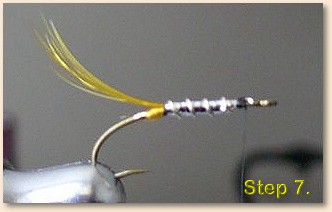 Step 7: Wrap the tinsel back to the tail and forward. Tie in, then wrap the rib from the tail to the front and tie it off too. Hold your thumb nail against the wire and wiggle the tag of the wire to get it to break off at your nail. This saves your scissors.
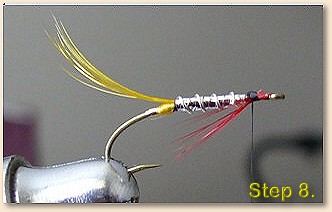 Step 8: Tie in a few bright red hackle fibres as a throat.
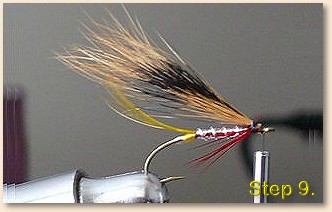 Step 9: Tie in a clump of fox squirrel tail hair as a wing. Start by doing one wrap around the hair only to form the clump, then tie this down firmly. It can help after a few good firm wraps to pass the thread over the top like a normal wrap, pull the hair forward, then wrap the thread behind the wing, come over the top again, and wrap a few more good firm turns. This can help elevate the wing. When you trim the waste, add head cement to the exposed tips then wrap to cover. Squirrel tail hair doesn't compress like deer hair, so wings made from it will "explode" if you snap the fly during your cast (guess how I know that!) .
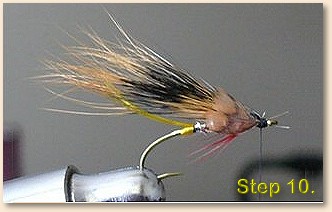 Step 10: Tie in two tips from Woodcock wing feathers. I also use the brown feathers from golden pheasant wings. Basically, a mottled brown feather is what you're looking for. They should extend about half the hook, so there's still some sliver exposed.
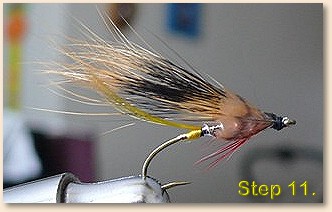 Step 11: Trim the stems, form a head, whip finish and that's it!
For more great flies, check out: Beginning Fly Tying, Intermediate Fly Tying and Advanced Fly Tying.
|